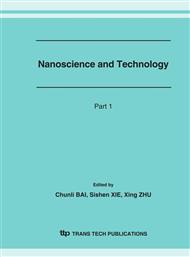p.1407
p.1411
p.1415
p.1419
p.1425
p.1429
p.1433
p.1437
p.1443
Evaluation of Flaw Size Distributions Responsible for Size Effects in Strength of Small-Scale MEMS Specimens
Abstract:
This paper describes a statistical method for evaluating the surface flaw distributions responsible for the improved strength and reliability of small-scale MEMS specimens. The method uses a power-law function, which, though empirical in form, is consistent with the conventional two-parameter Weibull distribution, to approximate the flaw size distributions on specimen tensile surfaces. The parameters in the power-law function are determined from Weibull strength plots. Literature data for single-crystal silicon beam specimens covering a range of widths from mm to nm are analyzed using this method. The analysis indicates a reduction in scatter in addition to increase in strength with diminishing specimen size, and quantifies a systematic tightening in flaw distribution associated with refinement in fabrication method and the limitations of physical sizes on flaw dimensions, which is consistent with the experimental observations. Furthermore, the implications of the increased strength and reduced strength scatter to the processing techniques and structural integrity of MEMS devices are discussed.
Info:
Periodical:
Pages:
1425-1428
Citation:
Online since:
March 2007
Authors:
Price:
Сopyright:
© 2007 Trans Tech Publications Ltd. All Rights Reserved
Share:
Citation:


